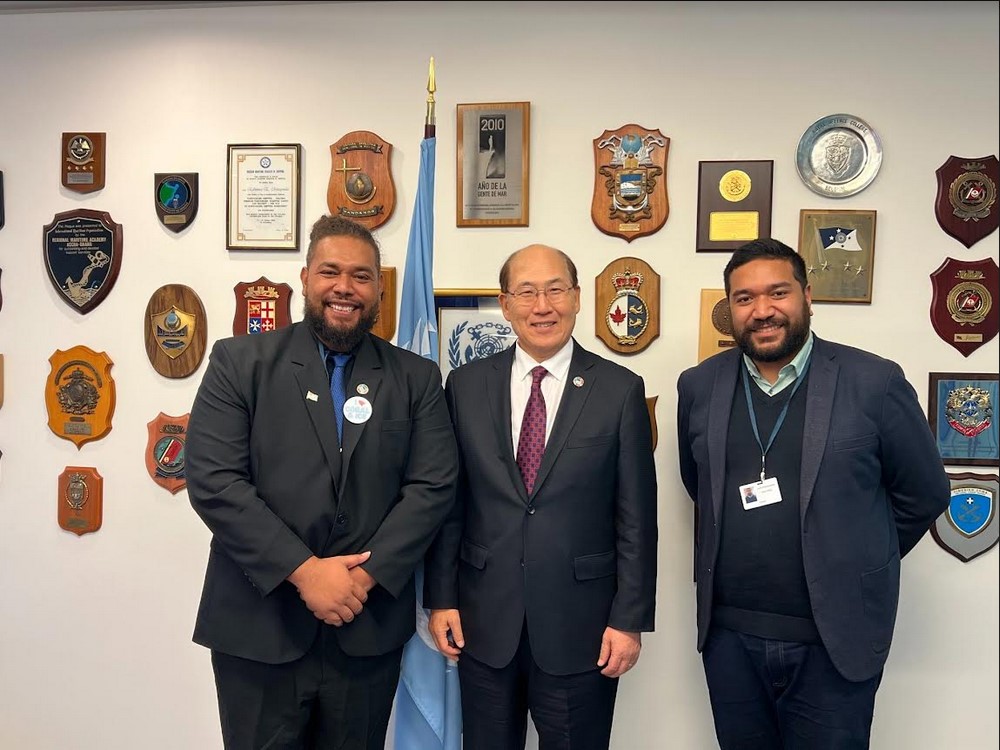By Maria Sahib (Micronesian Centre for Sustainable Transport)
It was a week-long battle for members of the International Maritime Organisation (IMO) at the 14th Session of their Intersessional Meeting of the Working Group on Reduction of Greenhouse Gas Emissions from Ships (ISWG-GHG 14). The group has been meeting on critical issues relating to the reduction of GHG emissions in shipping by 2050, including the review of the Initial IMO Strategy of 2018. The review of the Strategy carries the aspirations of the most climate-vulnerable countries because they are the ones who are most affected by the impacts of climate change. For some of these climate vulnerable countries, climate change poses an existential threat.
The four main areas that the ISWG-GHG 14 covered were (i) the calculation of the lifecycle GHG emissions of international shipping’s energy; (ii) the pathway/rates of the GHG reduction and the overall strategy to guide GHG reduction efforts; (iii) policy options such as carbon pricing and fuel standard and the specifics of those policy options that will regulate and incentivize; and (iv) the support for ‘just and equitable transition’ to guide further work on mid-term measures and other relevant initiatives, operationalising this in the Revised Strategy.
The ISWG negotiates technical aspects of the debate and works towards developing a consensus on the types and features of future policy measures. ISWG-GHG 14 enabled the process of achieving convergence and provided some insights into how the debates will conclude at the upcoming Maritime Environment Protection Committee’s 80th sitting (MEPC80). The discussions relating to the revision of the Initial IMO strategy concerned the vision, the levels of ambition, the scope, the guiding principles, as well as the mid-term measures and just and equitable transition.
The Pacific High Ambition Coalition, or the 6PAC, at the ISWG-GHG 14 consisted of Fiji, Kiribati, Marshall Islands, Solomon Islands, Tonga and Tuvalu, together submitted four proposals on various aspects of the revised strategy, including on the level of ambition, vision, basket of measures, timelines; just and equitable transition; revenue disbursements and legal principles.
The 6PAC stood their ground and made significant interventions to keep the SIDs’ and LDCs’ issues at the forefront of the debate. On the levels of ambition, the 6PAC endorsed the GHG reductions of the Science Based Targets Initiative's 1.5-aligned pathway. However, the IMO would be providing information to the next negotiation on the viability of these reduction levels and their different pathways based on their fuel/technology availability study. On the vision, the Chair proposed to keep the text in abeyance. On the basket of measures, 6PAC continued to push for a GHG levy (RMI/Solomon Islands proposal) and a global fuel standard, but the meeting recommended an ad-hoc expert workshop at some point in May to discuss and compare the different proposals in terms of compatibility, effectiveness and feasibility. The basket of measures would be discussed further at ISWG-GHG 15 in June. The members thought it was still too early to discuss the revenue generated as a by-product of the market-based measure, therefore it was proposed that it should be discussed after MEPC80. The term ‘Just and Equitable Transition’ received better understanding and many acknowledged the difference between just and equitable.
The working group agreed that no one should be left behind, and a just and equitable transition for decarbonisation of shipping was important. They also agreed that any measure should be climate effective. There are about 14 weeks between now and MEPC80 and there was still much work needed to be done in order to achieve the mandate of the Pacific SIDs if we were to achieve zero emissions by 2050.
Posted on - 2023-04-04
